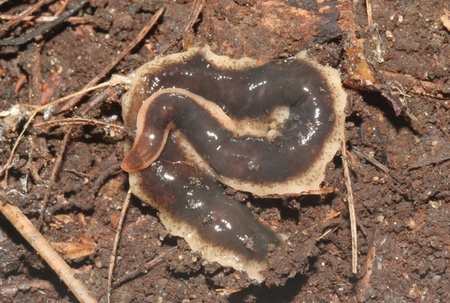Scientists at the University of Aberdeen need members of the public to help them to better understand how far the New Zealand Flatworm has spread and what effect this species is having on the local environment.
Introduced to the UK on imported plant material in the 1960s, the New Zealand Flatworm eats our native earthworms, which are essential for good soil quality and the food chain.
Since 2015, 1,500 people throughout the UK have contributed to our knowledge of where the New Zealand Flatworm is residing by submitting their observations via the OPAL New Zealand Flatworm survey. However, the team from the University of Aberdeen and the James Hutton Institute now want to gain an even better picture of how wide spread the problem is.
Dr Annie Robinson from the University explains: “The New Zealand Flatworm survey has allowed us to create a good picture of many areas. However, we are still lacking enough data to help us determine their existence in other parts of the country.
“Carrying out the survey is really straightforward. Search your garden, allotment, school grounds or public spaces for 10 minutes, focussing on dark damp places like under pieces of wood, stones or plastic. If you think you have found a New Zealand Flatworm, please take a photo and submit it along with its location via the OPAL website www.opalexplorenature.org/nzflatworm.
“Records where you don’t find any flatworms are also very valuable as knowing where the New Zealand Flatworm is absent is just as important in managing their spread as knowing where they already are so that we can compare the difference between environments where they exist and those where they don’t.”
New Zealand Flatworms are between 5-15cm long, flat with a dark brown topside and a creamy pale underside and edge, and often found curled up like a Swiss roll. They are pointed at both ends and covered in sticky mucus, trails of which are left wherever they have been.
The species is very difficult to control once established. They are able to survive without food for over a year by shrinking their body mass to 10% of their original weight. New Zealand flatworms are spread by moving topsoil or rooted plants between places, which allows this species to move from garden to garden. Current understanding of where in the UK they exist is very limited, but knowing their distribution could help target initiatives to prevent further introductions. Further information about the survey, the flatworm itself and advice to gardeners are available on the OPAL website.
The OPAL New Zealand Flatworm survey is coordinated by OPAL, the Open Air Laboratories initiative, the University of Aberdeen and the James Hutton Institute.


